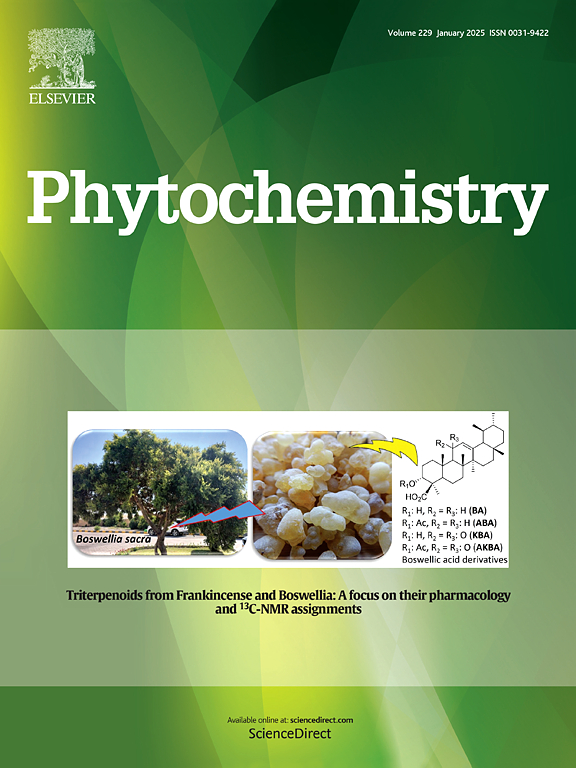Anti-inflammatory polyketides from the endophytic fungus Cladosporium pseudocladosporioides A887
IF 3.4
2区 生物学
Q2 BIOCHEMISTRY & MOLECULAR BIOLOGY
引用次数: 0
Abstract
Six undescribed tetralone derivatives, cladosporids A-C (1–3) and cladosporols K-M (4–6), together with eleven known cladosporols (7–17), were obtained from the endophytic fungus Cladosporium pseudocladosporioides A887, which was derived from Aquilaria sinensis (Lour.) Gilg. Specially, cladosporids A-C featured a previously undescribed skeleton with a fascinated 6/6/6/6/6-fused pentacyclic system, wherein cladosporids B and C were a pair of epimers. The structures and absolute configurations of these unreported compounds were determined using 1D/2D NMR, HRESIMS, UV, IR, ECD and quantum chemical calculations. In the bioassay, compounds 10, 11, 15, and 17 exhibited significant inhibitory effects on lipopolysaccharide induced nitric oxide production in RAW 264.7 macrophage cells with IC50 values ranging from 3.81 to 21.59 μM. To explore the binding interactions of the unreported derivatives (1–3) with their targets, molecular docking analysis was conducted against inducible nitric oxide synthase, revealing potential binding affinities and modes. Additionally, their plausible biosynthetic pathways were also discussed.

内生真菌假枝孢子菌A887的抗炎多酮
从木香内生真菌Cladosporium pseudocladosporioides A887中分离得到6个未描述的四虫素衍生物cladosporids A-C(1-3)和cladosporols K-M(4-6),以及11个已知的cladosporols(7-17)。Gilg。特别地,枝孢子纲a -C具有先前未描述的具有着迷6/6/6/6/6-融合五环系统的骨架,其中枝孢子纲B和C是一对外端。这些未报道的化合物的结构和绝对构型通过1D/2D NMR, HRESIMS, UV, IR, ECD和量子化学计算确定。在生物实验中,化合物10、11、15和17对脂多糖诱导的RAW 264.7巨噬细胞产生一氧化氮有显著的抑制作用,IC50值在3.81 ~ 21.59 μM之间。为了探索未报道的衍生物(1-3)与靶标的结合作用,我们对诱导型一氧化氮合酶进行了分子对接分析,揭示了潜在的结合亲和力和模式。此外,还讨论了它们可能的生物合成途径。
本文章由计算机程序翻译,如有差异,请以英文原文为准。
求助全文
约1分钟内获得全文
求助全文
来源期刊

Phytochemistry
生物-植物科学
CiteScore
6.40
自引率
7.90%
发文量
443
审稿时长
39 days
期刊介绍:
Phytochemistry is a leading international journal publishing studies of plant chemistry, biochemistry, molecular biology and genetics, structure and bioactivities of phytochemicals, including ''-omics'' and bioinformatics/computational biology approaches. Phytochemistry is a primary source for papers dealing with phytochemicals, especially reports concerning their biosynthesis, regulation, and biological properties both in planta and as bioactive principles. Articles are published online as soon as possible as Articles-in-Press and in 12 volumes per year. Occasional topic-focussed special issues are published composed of papers from invited authors.
 求助内容:
求助内容: 应助结果提醒方式:
应助结果提醒方式:


